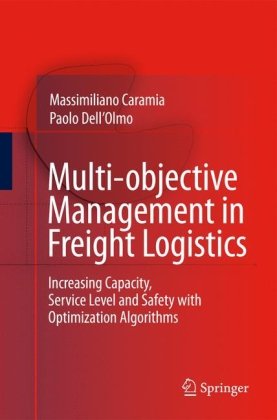

Most ebook files are in PDF format, so you can easily read them using various software such as Foxit Reader or directly on the Google Chrome browser.
Some ebook files are released by publishers in other formats such as .awz, .mobi, .epub, .fb2, etc. You may need to install specific software to read these formats on mobile/PC, such as Calibre.
Please read the tutorial at this link: https://ebookbell.com/faq
We offer FREE conversion to the popular formats you request; however, this may take some time. Therefore, right after payment, please email us, and we will try to provide the service as quickly as possible.
For some exceptional file formats or broken links (if any), please refrain from opening any disputes. Instead, email us first, and we will try to assist within a maximum of 6 hours.
EbookBell Team

4.4
72 reviewsThe complexity of modern supply chains requires decision makers in logistics to work with a set of efficient (Pareto optimal) solutions, mainly to catch different economic aspects for which one optimal solution related to a single objective function is not able to capture entirely. Motivated by this, and by recent changes in global markets and the availability of new transportation services, Multi-objective Management in Freight Logistics provides a detailed study of freight transportation systems, with a specific focus on multi-objective modeling.
Multi-objective Management in Freight Logistics provides decision makers with new methods and tools to implement multi-objective optimization models in logistics. The book combines theoretical aspects with applications, showing the advantages and the drawbacks of adopting scalarization techniques, and when it is worthwhile to reduce the problem to a goal programming one. The book also shows applications where more than one decision maker evaluates the effectiveness of the logistic system and thus a multilevel programming approach is sought to attain meaningful solutions.
Multi-objective Management in Freight Logistics opens by presenting the general working framework, and with analyses of logistic platforms and intermodality management in large scale transportation systems. This is then followed by a study of multi-objective route planning, based on the application of hazardous material transportation. Additionally, the book examines freight distribution on a smaller scale, as in the case of goods distribution in metropolitan areas. The general approach followed by the text is that of presenting both the network design and the tactical (planning) point of view, providing mathematics, algorithms and related experiments for each problem.